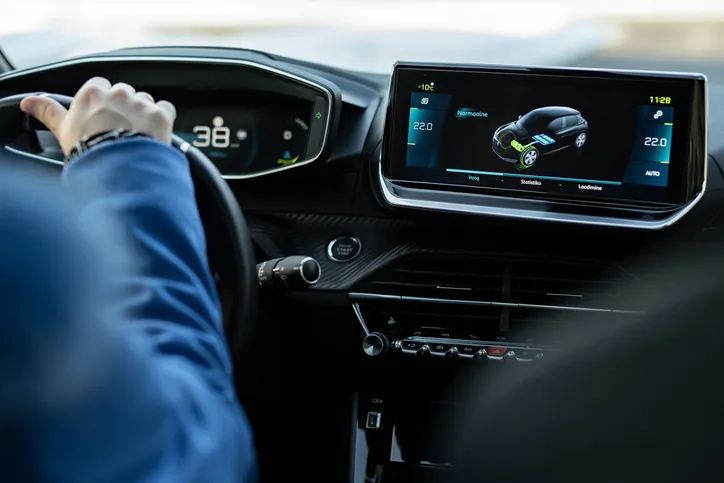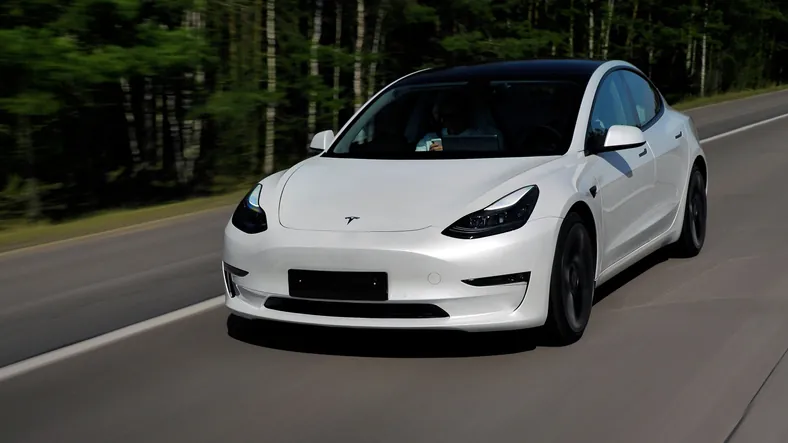Why EVs Are Causing Motion Sickness
Electric vehicles (EVs) have surged in popularity across the United States, with a 60% increase in EV sales from 2022 to 2023. While known for their eco-friendliness and innovative technology, drivers, and passengers have reported motion sickness in EVs. The phenomenon is particularly puzzling given the general perception that electric vehicles (EVs) provide a smoother ride than gas-powered vehicles. According to ABC News, the side effects of nausea in EVs have been more noticeable. Read on to learn how electric cars can cause and exacerbate motion sickness and tips to prevent motion sickness.
What Is Motion Sickness?
Motion sickness is a common but complex condition that can occur when one is in motion while sitting still.
As a passenger, have you tried to read a book in a moving car but couldn’t continue reading due to nausea? In this situation, your inner ear senses the vehicle’s movement, but your eyes, focused on the stationary book, send signals that you are still.
Your inner ears help control your sense of balance. Motion sickness happens due to a mismatch between the sensory inputs the brain receives from the inner ear, eyes, and deeper body sensors. When these inputs send conflicting information to the brain about the body’s movement and position, the brain struggles to adapt to them, leading to symptoms of motion sickness. Motion sickness while driving, also known as car sickness, can make driving uncomfortable and stressful. When an individual is car sick, it can make it difficult for them to control and anticipate the path of a vehicle, which could potentially increase the risk of a car crash.
What Are the Symptoms of Motion Sickness?
- Nausea
- Vomiting
- Dizziness
- Sweating
- Generally feeling of discomfort
- Headaches
- Increased production of salivation
- Rapid breathing
- Burping
- Drowsiness
- Sweating
- Drop in blood pressure
Electric Vehicle Factors That Can Trigger Motion Sickness
Anyone who’s experienced carsickness on a long drive knows it’s an awful and debilitating feeling. Some experts suggest that electric vehicles can cause motion sickness due to factors including:
Instant Torque
Torque is a measure of rotational force that causes an object to rotate around an axis. In vehicles, it determines the engine’s ability to create rotational power, which translates to acceleration. Higher torque allows for quicker and more powerful starts, which is essential for performance and efficiency in both conventional and electric cars.
One significant factor is the instant torque delivery that EVs are known for. This capability, however, leads to swift changes in speed, which can be jarring for vehicle occupants. The sudden surges of power during acceleration and the abrupt deceleration when using regenerative braking can lead to sensory conflicts that can cause motion sickness.
Electric cars often deliver instantaneous torque, which means they can accelerate and decelerate very rapidly. Unlike traditional internal combustion engines, which gradually build up torque, electric motors can deliver their maximum torque immediately. This can lead to an abrupt rocking or seesaw motion for passengers. The rapid change in motion can disrupt the inner ear’s balance mechanisms, causing motion sickness.
Regenerative Braking
Another factor is the regenerative braking system, which decelerates the car when the driver lifts their foot off the accelerator. According to John Voelcker, former editor of Green Car Reports, lifting off the accelerator in an EV has a learning curve, and you have to modulate it.The regenerative braking systems in many EVs can unexpectedly slow the vehicle when the driver releases the accelerator pedal, creating unpredictable and jerky movements as the car lurches forward and rocks back.
Quiet and Rapid Transitions
In combustion cars, you hear the engine revving as the vehicle moves forward. You know someone is stepping on the accelerator because it makes a sound.
However, electric cars are silent operators. With EVs, audio, visual, and physical cues associated with gas cars are mostly absent. Therefore, their quieter operation can heighten the perception of rapid movements, making it harder for passengers to anticipate and brace for them.
The smooth and often rapid transitions between speeds can exacerbate the sensory mismatch, which can make car occupants car sick.
Digital Interiors
Technological advances in EVs include the growing presence of numerous screens inside vehicles. These screens are typically larger and overburden users with visual information. This immersive environment can stress vulnerable passengers and discourage them from looking outside, which can cause them to suffer nausea from screens.
Other Factors That Cause Motion Sickness
- Your visual environment: When passengers read or look at a screen while moving, they are more likely to experience motion sickness due to the conflicting signals sent to the brain.
- Having a family history of motion sickness: Some individuals may be more susceptible to nausea and motion sickness.
- Inner ear disorders: Conditions like benign paroxysmal positional vertigo (BPPV) can cause brief episodes of mild to intense dizziness.
- Anxiety: Stress and anxiety can put your body in fight-or-flight mode, which can heighten the likelihood of motion sickness.
- Dehydration: Dehydration can lead to dizziness or vertigo, increasing the risk of motion sickness.
The Impact of Autonomous Driving on Motion Sickness
Autonomous driving technology, while promising enhanced safety and convenience, may also impact motion sickness. The primary concern is that passengers in autonomous vehicles (AVs) are more likely to engage in non-driving activities such as reading, working on laptops, or watching videos.
These activities can increase the risk of motion sickness as they require focusing on a stationary object while the vehicle is in motion, creating a sensory mismatch. Furthermore, the driving style of autonomous systems, which may involve more abrupt and frequent adjustments than human drivers typically make, can also contribute to motion sickness.
However, advancements in AV technology could potentially mitigate these effects. For instance, smoother driving algorithms and customizable ride settings that allow for gentler accelerations and decelerations might help prevent vehicle occupants from experiencing rapid movements. Countermeasures are currently being researched, including programming a comfortable driving style that imitates human behavior and limits sudden acceleration.
Preventing and Alleviating Motion Sickness in Electric Cars
Here are some ways electric car occupants can mitigate motion sickness:
- Sit in the front seat where visibility is better and motion is less pronounced
- Focus on the horizon or a fixed point to help your brain adjust to sensory inputs
- Roll down your windows to get some fresh air
- Take frequent breaks during long journeys
- Passengers can lean their seats back and rest their heads against the seats
- Adjust the vehicle’s settings and lower the regenerative braking for a smoother ride
- Ensure your vehicle has good ventilation
Award-Winning California Personal Injury Lawyers
If you or a loved one sustained injuries in a motor vehicle accident, our team of award-winning personal injury attorneys can help you obtain the highest compensation possible. An experienced car accident lawyer can help you navigate the complexities of gathering evidence, filing a car accident claim, and negotiating with insurance companies.
At Alpha Accident Lawyers, we advocate for car accident victims who were injured due to another person’s negligence. Call our law office today to schedule a no-obligation, free consultation.




![Renee Gonzalez Killed in Pedestrian Accident on Highway 199 [Springtown, TX]](https://alphaaccidentlawyers.com/wp-content/uploads/2023/11/iStock-1472245535-1-720x480.jpg.webp)

